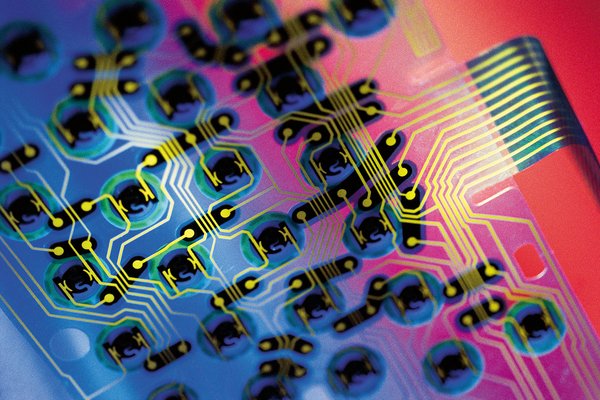
by Erin Wayman Thursday, January 5, 2012

Some scientists say recycling the nonmetal parts of printed circuit boards to use as an asphalt additive solves two problems: It makes roads stronger and reduces electronic waste. Adobe Images
Americans throw away a couple million tons of unwanted computers, cell phones, TVs and other electronics every year. Researchers in China, a major destination of the waste, say they know how to get rid of this mounting e-waste: Recycle the nonmetal components of the printed circuit boards found in many electronics for use as an additive to make asphalt more durable. Pavement engineers say it’s not such a bad idea — but unless several potential roadblocks are cleared, don’t expect to drive down a highway paved with old computer parts anytime soon.
Asphalt is the dark, sticky material that binds rocks, gravel and sand together to make the pavement that covers more than 90 percent of U.S. roads. But as anyone who has ever driven down an old highway knows, asphalt is not immune to cracking in the freezing cold or deforming in the sweltering heat.
To recycle more garbage, “people have been dumping all sorts of stuff in asphalt,” says Rajib Mallick, an associate professor of civil and environmental engineering at Worcester Polytechnic Institute in Massachusetts — old tires, ground-up toilets, glass and shingles, to name a few. It can be a good way to reuse unwanted junk, Mallick says, if it improves the asphalt and is environmentally safe.
Given the growing number of unwanted electronics, Zhenming Xu of Shanghai Jiao Tong University in China and colleagues decided to see if printed circuit boards might do the trick. They crushed the circuit boards into a fine powder and then removed all the metal, leaving behind mainly glass, resins and fibers. Next, they mixed the powder with asphalt and tested the asphalt’s properties at high temperatures. Adding the recycled material made the modified asphalt more viscous and therefore stiffer than unmodified asphalt, the researchers reported in the journal Environmental Science & Technology. Stiffer asphalt should make for a pavement that stands up better to heat.
Scott Shuler, an associate professor of construction at Colorado State University in Fort Collins, isn’t surprised someone thought of adding old electronics to asphalt, but he’s reserving judgment on the value of the additive until more testing has been done. “The next piece of the puzzle is what it does at the low temperatures,” Shuler says. Often when something stiffens asphalt at high temperatures, he says, “there’s also a stiffening at low temperatures, which can lead to an increased susceptibility to cracking.” The ideal asphalt modifier, therefore, is something that allows asphalt to be stiff when it’s hot, yet elastic when it’s cold.
The researchers also need to demonstrate that adding the pulverized circuit boards doesn’t affect asphalt’s ability to be recycled, says John Haddock, an associate professor of civil engineering at Purdue University in West Lafayette, Ind. Asphalt is the most recycled material by weight in the United States, so anything that limits asphalt’s recyclability will be a no-go, Haddock says.
Even if circuit boards turn out to be a good modifier, it doesn’t mean they will be used. Economics is another consideration, Haddock says. Often one issue with using recycled material is that there is not a large enough supply to keep up with demand. And if there are not enough discarded circuit boards out there, then it won’t be economically viable to set up the necessary factories to recycle them for use in asphalt, he says — which is a problem with many of the materials people have tried to add to asphalt, like certain types of glass.
But if a circuit-board modifier manages to pass all of those tests, the next step is for the local, state and federal agencies that set the guidelines for how roads are made to consider their use, says R. Gary Fore, vice president of Environment, Health & Safety for the National Asphalt Pavement Association in Lanham, Md. Changing the rules isn’t a “five-minute job,” Fore says, so circuit-board modifiers have a long road ahead, if they are to be used in the United States. “But,” he says, “we’re always looking for innovative ways to improve asphalt.”
© 2008-2021. All rights reserved. Any copying, redistribution or retransmission of any of the contents of this service without the expressed written permission of the American Geosciences Institute is expressly prohibited. Click here for all copyright requests.